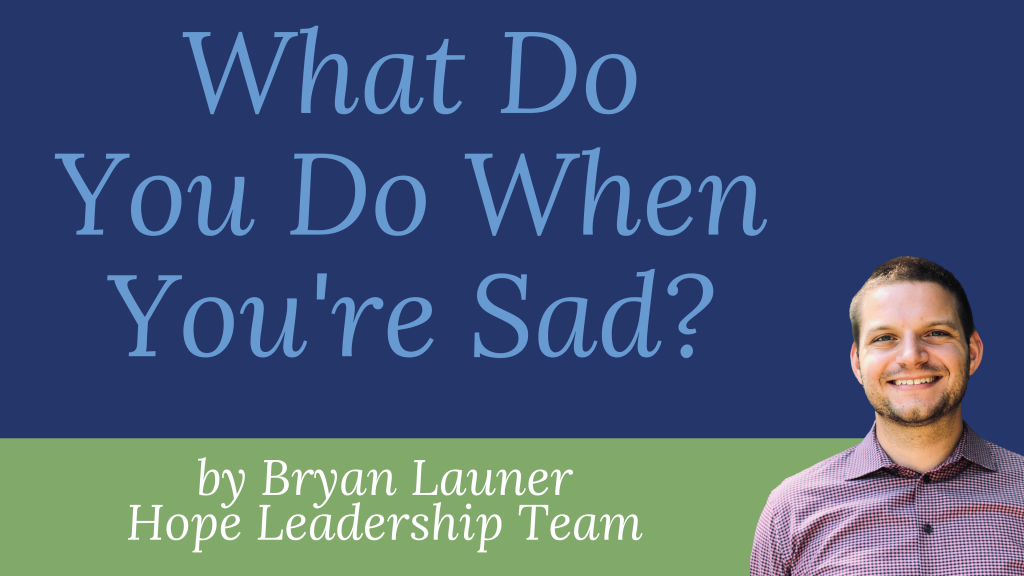“Everybody hurts. Everybody cries.” – R.E.M.
We generally don’t need much convincing that this world is not the way it’s supposed to be. We encounter the brokenness of this world around every corner. We are over two years into a pandemic. The war in Ukraine is the latest iteration of armed conflict happening around the world. But we also feel the brokenness more locally. Our bodies are frail and subject to sickness and death. We feel it in the conflict in our relationships, in our decisions—doing what we don’t want to do and not doing what we should. The brokenness—especially of late—seems like it is everywhere, pressing down and in, suffocating…
When you’re suffering and sad, what do you do? How do you respond?
Some spring into action, eager to fix the situation and right the brokenness. Others attempt to run from their sorrows, exiting painful relationships and situations. If we can’t find an exit, we begin to look for escapes: alcohol, television, friends who won’t disappoint you. Others are crushed under the weight of this sadness and despondency, paralyzed by the sorrows and hardships of a fallen world.
What you do when you are sad reveals what’s in your heart. As Jesus said in Luke 6:45, “out of the abundance of the heart his mouth speaks.” In a similar way, out of the abundance of our hearts, we respond when we’re sad.
As we ponder the complex motivations of the heart, my mind wanders to those WWJD bracelets that were particularly popular when I was growing up. Can Jesus be an exemplar for responding well to sadness and suffering? What does Jesus do when he’s sad?
In Matthew 26, Jesus is nearing the end of his Passion Week. He’s eaten with the disciples in the upper room, he withdraws to Gethsemane, and is subsequently arrested, tried, and abandoned by Peter. In Gethsemane, as Jesus looks forward to the suffering that is to come, he tells his disciples: “My soul is very sorrowful, even to death…” (Matthew 26:38). Even Jesus experienced deep sorrow as he considered the brokenness of this world.
So what did Jesus do when he was sad? He withdrew to a quiet place. He spoke about these sorrows with his disciples. He asked them to pray with him. He turned toward the Father. He spent the night calling out to his Father. He conformed his will to that of the Father. He moved forward in obedience.
Because of Christ’s perfect obedience, we are able to follow in his footsteps. We can respond to sorrow and heartbreak differently than our old ways.

